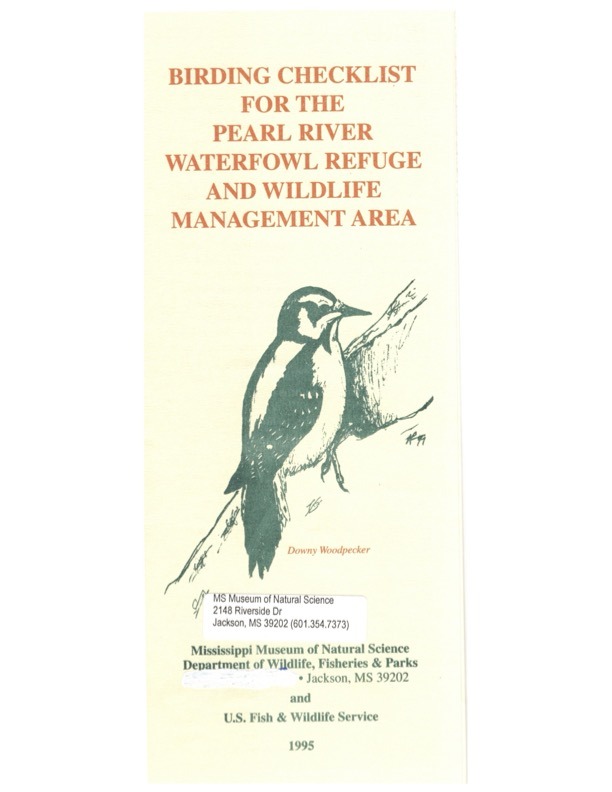Birding Hotspots / Pearl River Waterfowl Refuge and Wildlife Management Area, Canton
Jackson Audubon Society
The Mississippi Department of Wildlife, Fisheries and Parks (MDWFP) is responsible for the management of the Pearl River Waterfowl Refuge and Wildlife Management Area (WMA). The area lies northeast of Jackson in Madison County, just north of the Barnett Reservoir on Hwy 43 between the Natchez Trace Parkway and the Pearl River. Established in the 1960’s the area contains 6,000 acres of freshwater ponds and marshes, shrub swamp, hardwood flats and pine-hardwood ridges which support a diverse variety of birds and other wildlife.
This WMA is designated an IBA (Important Bird Area) by the National Audubon Society. Extensive wintering habitat for waterfowl is easily viewed from the Observation Tower on Hwy 43 (one mile east of the intersection of the Natchez Trace and Hwy 43). Other seasons afford good opportunities to see wading birds (herons, egrets, ibis) as well as songbirds in the pecan grove leading to the Observation Tower. From the Observation Tower continue east on Hwy 43 for 2 miles to the entrance of the WMA. Turn left onto the gravel road known as Pipeline Road which runs adjacent to the Pearl River marshes. This road has become a favored drive for birders in the Jackson area. Most birding is done by simply driving the road and getting out at likely spots to look and listen. Approximately 208 species have been recorded along this well-maintained gravel road.
IMPORTANT: WMA PERMIT – A user permit from the MDWFP, is required to enter the area and can be purchased from the MDWFP or online. Those over 65 are exempt from purchasing this permit.
Be sure to stop at the check-in kiosk at the entrance to Pipeline Road and fill out the daily visitor use permit or use the WMA Check-In App. Be aware that there is some type of hunting going on from July through the end of February so you might want to wear Hunter Orange.
Nesting birds in this area include Bald Eagle, Wild Turkey, Anhinga, Great Egrets, Barred Owls, Least Bittern, Mississippi Kite, Purple and Common Gallinule, Red-headed, Pileated, and Downy Woodpeckers, Wood Thrushes, Prothonotary, Kentucky, and Yellow-throated Warblers, and Summer Tanagers. In winter American White Pelicans, gulls, Forster’s Terns, and Double-crested Cormorants can be observed on the river as well the reservoir, and a wide variety of ducks can be present from fall through spring in the marshes along Pipeline Road.

